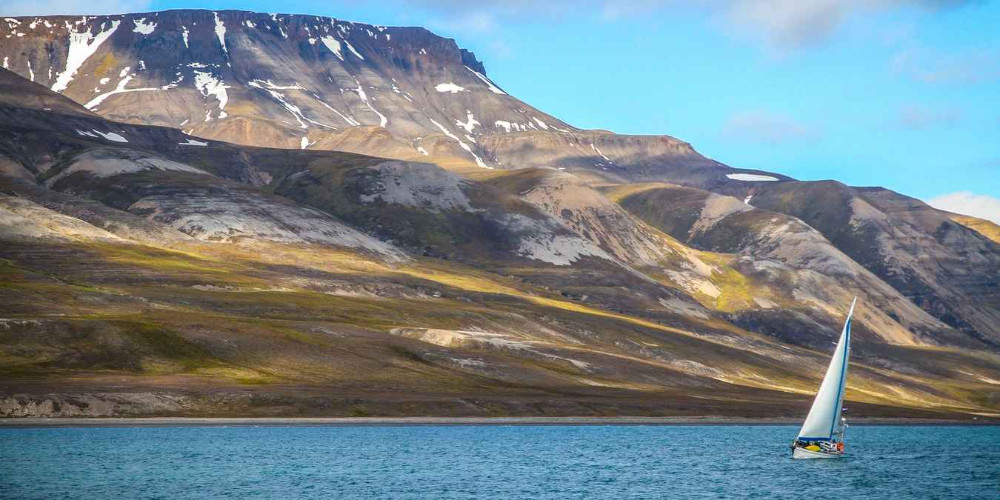TABLE OF CONTENTS
- 1. What is the continent Svalbard and Jan Mayen?
- 2. History of the islands and when was Jan Mayen and Svalbard established?
- 3. Svalbard and Jan Mayen population and what language do they speak in Svalbard and Jan Mayen?
- 4. Interesting facts about economy Svalbard and Jan Mayen and Svalbard and Jan Mayen currency
- 5. What are some interesting facts about Svalbard and Jan Mayen? Honestly, everything about the archipelago!

No one can argue with the fact that, including everything that happened this year, especially with a summer lockdown, it certainly was the longest summer of our lives. And that is why today's destination of ours will be the most "winterish" ever! We are heading to the most northern settlement in our planet, to be more precise to Svalbard and Jan Mayen islands. But where are Svalbard and Jan Mayen islands, in the first place? Svalbard is an archipelago under the jurisdiction of Norway in the Arctic Ocean but is entitled to the special status given by the Treaty of Svalbard. Jan Mayen is a small Arctic Ocean island; it has no established inhabitants and is governed by the Governor of the County of Nordland. Svalbard and Jan Mayen have in common that they are not assigned to counties as the two combined portions of Norway. However, in this article we will not be mainly focusing not on geography as our mission for today is to find out just the most interesting facts about the islands, including the ones about culture, language and much more. So, if you were asking yourself "What are some interesting facts about Svalbard and Jan Mayen?", then you are on the right blog post!
1. What is the continent Svalbard and Jan Mayen?

Svalbard is a desert in the Arctic. Its permafrost makes the Global Seed Bank, an underground warehouse for the essential crops in the world, the perfect home. But this permafrost also ensures, with no plants and few animals, that nothing can take root. Looking at geographic situations of islands separately, we can indicate that: In the Arctic, Svalbard is an archipelago about halfway between mainland Norway and the North Pole. The group of islands extends from latitude 74° to latitude 81° north. The city is 61,022 square kilometres, and in 2009 there were 2,572 inhabitants. The biggest island is Spitsbergen, followed by Nordaustlandet. The administrative centre is Longyearbyen, and the Russian mining city of Barentsburg is another settlement, in addition to the research outposts.
Meanwhile, when it comes to Jan Mayen, the situation is even more interesting. Jan Mayen is an Arctic Ocean volcanic island found on the edge of the Norwegian Sea and the Greenland Sea. The single island occupies an area of 377 square kilometres and is occupied by Beerenberg volcano, which is 2,277 meters high. A joint military and meteorological outpost in Olonkinbyen are the only community of the island. In 1922, the island was transferred to Norway by the Norwegian Meteorological Institute. The island was declared a member of the Kingdom of Norway on 27 February 1930, de jure.
But what is the continent Svalbard and Jan Mayen? Neither Svalbard nor Jan Mayen has their own flag or coat of arms, and for all of them, the Norwegian flag is used alone and as a group. As they both are part of Norway, it would be very reasonable to say that the islands are as European as Island when it comes to classifying them into one of the continents.
2. History of the islands and when was Jan Mayen and Svalbard established?

History of Svalbard dates back to 16th century. Willem Barentsz first explored the polar archipelago of Svalbard in 1596, but there is contested evidence of the use of Pomors or Norsemen. Whaling began in 1611 for bowhead whales, dominated by English and Dutch corporations, while other countries took part. There was no consensus about sovereignty at the time. Whaling stations were established during the 17th century, the largest being Smeerenburg, but whaling eventually declined.
Early in the 17th century, Jan Mayen was discovered and became part of Norway in 1930. An active Norwegian military and weather station is situated here. There is no touristic infrastructure whatsoever: no freely accessible lodging or transport services. Jan Mayen was declared a Reserve of Nature in 2010. on the other hand, for curious polar adventurers, it is a unique, exciting island, interesting in geology, landscape and history, and completely worth visiting and experiencing.
But when was Jan Mayen and Svalbard established? "Svalbard and Jan Mayen" is a statistical classification established by ISO 3166-1 for the joint grouping of Svalbard and Jan Mayen, two distant jurisdictions of Norway. Although these are merged for the purposes of the category of the International Organisation for Standardization, they are not related administratively. Owing to objections from the Norwegian Minister of Foreign Affairs, an effort to change the ISO code to only "Svalbard" has previously failed. Nevertheless, "Svalbard and Jan Mayen" literally means just "Svalbard" for statistical use of population and commerce.
3. Svalbard and Jan Mayen population and what language do they speak in Svalbard and Jan Mayen?

Svalbard had a population of 2,667 back in 2016, of which 423 were Russians and Ukrainians, 10 were Polish, and 322 were non-Norwegians living in settlements in Norway. Longyearbyen, the Governor's seat and the first town to be incorporated, is the largest city on the archipelago. A hospital, both primary and secondary school, a leisure complex with a swimming pool, a cultural centre, a cinema, bus transport, hotels, and several museums are available in the area. Meanwhile, as we have mentioned above, there is absolutely no one permanently residing in Jan Mayen. So when we say Svalbard and Jan Mayen population, what we actually mean is the population of Svalbard only.
But what language do they speak in Svalbard and Jan Mayen? Norwegian is the official language of Jan Mayen and Svalbard, and, of course, is the main language in the islands. The Svalbardposten weekly is published as well in Norwegian. However, Barentsburg contains Russian-speaking villages primarily. In Svalbard's capital, Longyearbyen, some Russian is spoken and appears on some signs. The abandoned Russian-speaking populations included Grumant until 1961. Russonorsk's history is mostly limited to the 18th and 19th centuries. The 1917 Russian Revolution brought about the complete termination of its usage.
4. Interesting facts about economy Svalbard and Jan Mayen and Svalbard and Jan Mayen currency

Coal mining, tourism and science dominate the economy of Svalbard. Almost all of the accommodation is owned by different employers and institutions, but without working with an existing institution, it isn't easy to survive on Svalbard. Svalbard was defined as a free economic zone by the Svalbard Act. The focus of tourism is on Longyearbyen. Hiking, kayaking, wandering around ice caves are both things. Traffic between March and August is especially high. On the way to Svalbard, there are ATMs available at airports; if you have a credit card on one of the big networks, such as Cirrus, it is quick to use them. It is easier to use ATMs to change your money in your home country than to swap foreign currencies or traveller cheques. But what is Svalbard and Jan Mayen currency? In Svalbard, the local currency is the "Norwegian Krone". There is one Norwegian Krone broken into 100 øre. I will also suggest that you change your money on arrival or at home before leaving when driving, it is more difficult to change money.
5. What are some interesting facts about Svalbard and Jan Mayen? Honestly, everything about the archipelago!

Everything about these islands feels untouched, breath-taking and, in short, amazingly interesting! No wonder why, Svalbard is literally on list of must-visit places of all adventure lovers. So, it is not surprising at all that for a multitude of factors, Svalbard is the number one tourism destination in the High Arctic. Firstly, with its commercial airport and cruise terminal, its key settlement is easily reachable. This wilderness is home to unprecedented wealth and variety of Arctic species, in addition to providing the ideal depiction of the untouched polar landscape in most people's imagination of the Arctic.
Meanwhile, Longyearbyen Svalbard and Jan Mayen is one of the most important places to visit during your visit to the islands. Longyearbyen is Svalbard's largest city and administrative base, which is also served by the northernmost airport for daily scheduled flights. Longyearbyen Svalbard and Jan Mayen is broken into many suburbs. The cemetery, then Huset and the theatre, and finally Sverdrupbyen, lies still further up. On the east side of the river, much of the residential, commercial, and cultural institutions are situated. The zone along the bay is called Sjøskrenten. Further north, there is the university centre and the main residential district, Gruvedalen. The main shopping centre and the town hall are situated southwards from there.
Get your visa with one click
Ready to get visa assistance without waste time?



